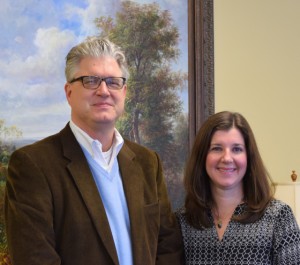 This is a guest post by Allen Smart, Interim President and Vice President of Programs, and Nora Ferrell, Director of Communications, at the Kate B. Reynolds Charitable Trust
This is a guest post by Allen Smart, Interim President and Vice President of Programs, and Nora Ferrell, Director of Communications, at the Kate B. Reynolds Charitable Trust
Most of us chose the world of philanthropy because we wanted to make a difference—the same goes for our friends in the nonprofit arena. But soon, some of us realize that “making a difference” isn’t enough—what we really want is to make an impact, to change what needs to be fixed. Then, after awhile of trying to make an impact, we figure out that making change—the kind of change that sticks—is really hard. We reflect on our experiences, and we realize that our best shot at lasting change requires disruption. Because how can philanthropy create change if the systems around us remain the same?
At the Kate B. Reynolds Charitable Trust, we’ve started being disruptive. This isn’t about talking loudly during quiet time; this is about upending the status quo, facing the contradictions in community head on and thinking about our responsibilities well beyond the cutting of a check.
So HOW do you disrupt? We can all write a long list of barriers to being disruptive – boards, staff, politics, money, lethargy, inertia, routine. We challenge you to throw out the list of obstacles and make a list of opportunities.
In the spirit of why we got into this field in the first place, we present how to be a Disrupter for a Day.
The How To Guide: Be a Disrupter for a Day
1) Ask the unasked question. How many times do we leave the meeting wishing someone had asked the critical make-or-break question? Communities depend on us to bring an experience-informed lens and an open mind to the party—use the “funder privilege” to say what others can’t.
2) Throw a small fire into a stalled movement. In philanthropy, we are always in danger of acting too quickly because we hold the checkbook and know that many will follow our lead. But what about when we can disrupt something static and re-energize people on the ground? For example, in many communities, residents gave up going to Board of Health meetings years ago because there wasn’t a way for them to share their ideas. Challenge that notion and work with the county to create a space for meaningful public input. Then work across the community to get people to attend and participate!
3) Talk like you mean it, and make meaning it understandable. Once this week, drop your foundation bureaucrateeze and speak with a prospective grantee or partner with passion, transparency and clarity. Concurrently, make it okay for community members or grantees to tell you if your jargon is losing everyone in the room.
4)Diversify the nonprofit voices you’re hearing from. Create opportunities to spend time with staff or volunteers who are on the front lines or running a program you’ve never heard about. The grantor-grantee dynamic never goes away, but if funders work harder to have real, honest conversations with a variety of people, you’ll be amazed what you might learn.
5) Reconsider your definition of “community” and talk internally about those assumptions. Do we know what we mean when we say “community?” Do local residents recognize what we call their “community?” Who do program staff speak with in “the community?” Are they the right people? Or are they the safe people? Include more than just program staff in this discussion—the entire foundation has a stake in doing this work well.
6) Look at one promising off-the-wall idea that your foundation might never consider and take it seriously. Do we say we won’t support certain types of work for sound strategic reasons or because it’s easier than really digging into the idea? When the time is right, say “I will think about it” rather than “No.” Fifteen years ago some innovative thinkers proposed that health education messages be delivered to adolescents via phone. How many funders thought that was a crazy idea? Today, sending health information via phone has proven to be very effective with certain audiences, and more and more organizations are trying to figure out texting strategies that engage and motivate people to action.
7) Turn the tables. Be a grantseeker to find out what it feels like on the other side. Put your board members in situations that mirror the experiences of grantseekers. How will you respond when put on the spot to tell a funder how you’re going to sustain that program?
8) Develop public presentations on things you could have done better. Sure, we all want to talk about what went well, but it’s much more interesting to hear about mistakes made and lessons learned. Engage board members in this work. Don’t just view other funders as your audience- think of your communities too. You will be surprised at how appreciative people are when you’re transparent and honest. After all, everyone makes mistakes. The question is, do we learn from them?
The challenges of being an effective philanthropist are well chronicled. It’s easy to become complacent since there are few pressures to be accountable for our actions. How much better might we be if we stopped and did something differently just one or two times? Disrupt something today. Your heart and head will thank you.






